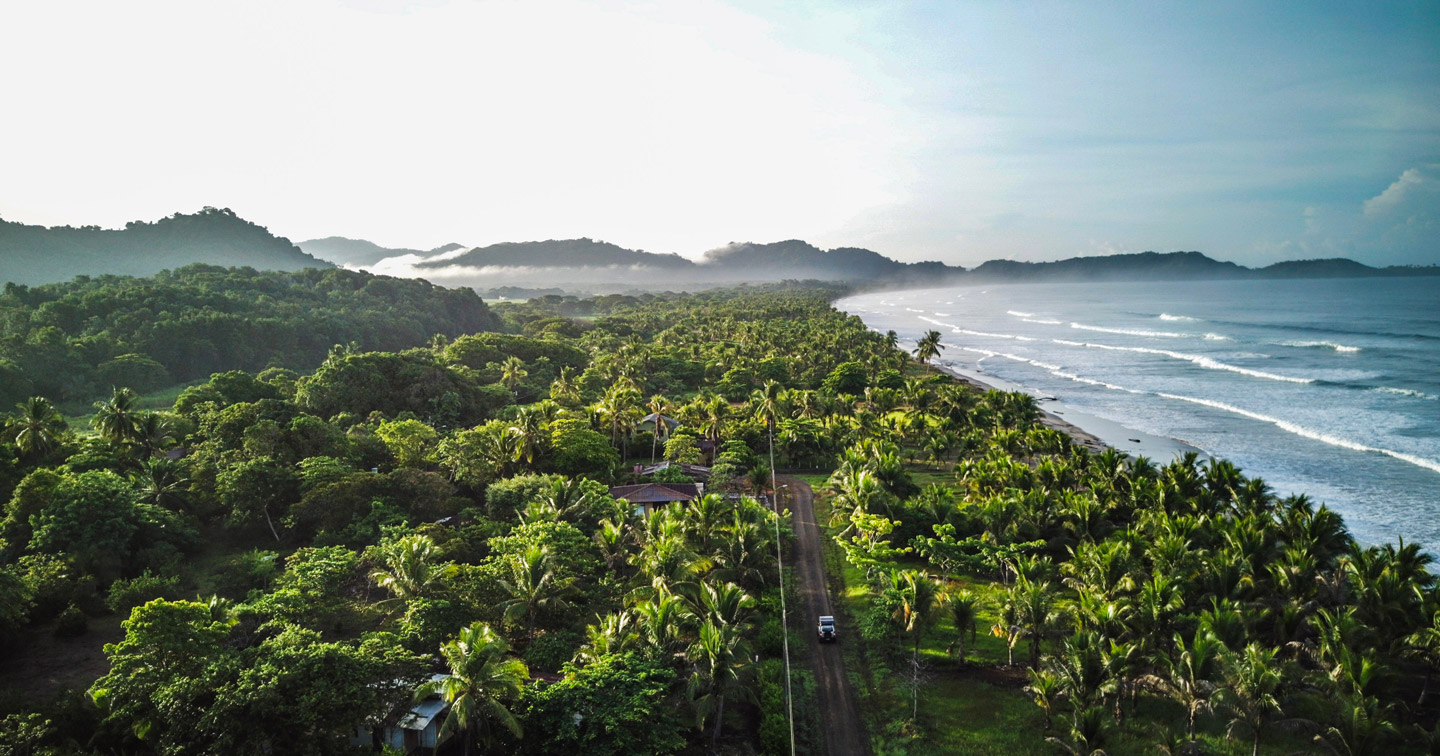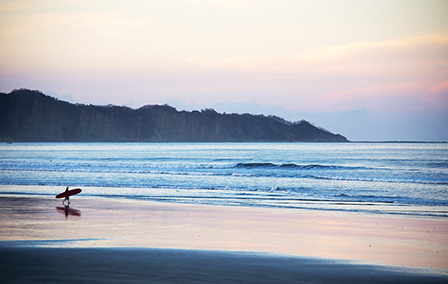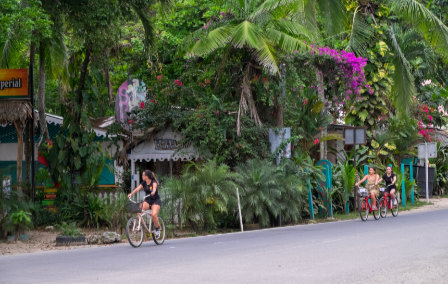Published 31st Jan. 2023
Reading time
Teeming with tropical rainforests, deserted beaches and bountiful wildlife, it’s almost unbelievable how biodiverse Costa Rica is. Thankfully, more than a quarter of the country is safe guarded by some form of environmental protection, allowing its flora to flourish and its fauna to remain unscathed. Costa Rica’s on-land beauty is obvious, but what if you venture beneath its turquoise-tinged waves? Like tumbling down a rabbit hole into a fantasy realm, diving in Costa Rica reveals a wealth of whacky and wonderful creatures. This underwater world can be neatly summed up by the translation of the country’s name; ‘Rich Coast’. In fact, Costa Rica boasts a duo of sea life-rich coastlines, due to its geographical position at the crossroads between the Pacific Ocean and the Caribbean Sea. Read on to find out more about the Central American nation’s most prolific dive spots…
Cocos Island’s reputation precedes it. Declared ‘the most beautiful island in the world’ by famed oceanographer Jacques Cousteau, the remote island doesn’t struggle to live up to this lofty claim. Positioned just over 340 miles from Costa Rica’s coastline, it is the only eastern Pacific Island with a tropical rainforest – and this unique feature caught UNESCO’s eye in 1997. The island also offered inspiration for the Jurassic Park movies and continues to inspire avid divers, with its year-round nutrient-rich currents and abundance of marine life. Hordes of hammerheads are the main residents here, but you can also expect to see sailfish, turtles, tuna, dolphins, eagle rays, marble rays and 27 different endemic fish species. Access is only possible via liveaboard, but this only aids the preservation of its surreptitious and special nature.
Sometimes likened to a junior Galapagos, Papagayo is another fine spots for diving in Costa Rica, located on the country’s north Pacific Coast. As the apprentice of Charles Darwin’s favourite archipelago, Papagayo also isn’t big on coral. But what it lacks in this department, it more than makes up for with its thriving colonies of harlequin crown shrimp, herds of seahorses, bed of morays and flotillas of turtles. The peninsula also acts as a gateway to many of Costa Rica’s other dive hotspots such as the Bat and the Catalina Islands.
Found off Costa Rica’s southern Osa Peninsula is the Caño Island Biological Reserve. As the name suggests, the region is protected so diving here is highly controlled in order to preserve the fragile eco-system. There are five official dive points and only ten divers are allowed in the water at one time. The success of its exclusive status and minimal human presence is evidenced by the prosperous populations of manta rays, bull sharks and nurse sharks, which call the site’s rocky peaks and canyons home.
Another marine protected area is the Bat Islands, which are situated out past the Papagayo Peninsula on Costa Rica’s northwest coast. The volcanic archipelago is best known for its resident bull sharks, which have been observed cruising around the outermost islands at a staggering 23ft long. While these big fish undoubtedly govern the waters around here, smaller inhabitants like manta rays, moray eels, sea stars and wild octopuses have found their way to make the island’s waters home. When it comes to diving in Costa Rica, the Bat Islands tend to remain reserved for the most dedicated of divers, given the strong sea currents and depths which plunge as deep as 30 metres.
A collection of rugged, volcanic outcrops, the Catalina Islands sit pretty mid-way along the Pacific coast of Costa Rica, between two and 15 miles offshore. The islands are surrounded by gin-clear waters and are home to an array of underwater topography. While vibrant corals cover intriguing natural rock formations and turtles and reef sharks glide in and out of gaping caves and arch-shaped structures, it is the rays that really rule roost underwater here. From eagle rays, giant Pacific manta rays and devil rays to bullseye rays, bat rays and Mobley rays, it's not so much about when you’ll see them, it’s about who you’ll see first.
Written by Luisa Watts

Whether you want to hit the hotspots or venture off the beaten track, our consultants will create a bespoke Costa Rica trip for you. Having scoured the country for the best properties, we offer everything from rustic lodges to luxurious hideaways. We can take you away from the crowds using our knowledge of hidden beauty spots; so instead of queuing for a waterfall in Arenal, you can enjoy a river all to yourself in Bijagua. With something for both families and couples, Costa Rica is best discovered on a self-drive trip – don't worry, you can leave the route planning to us.
ENQUIRE NOWPractical advice and inspiration for your next trip

Sandwiched between Panama and Nicaragua, among deliciously verdant greenery, lies the happiest country on earth: Costa Rica. Overflowing with exotic wildlife, misty volcanic peaks and surfers’ havens, it’s no wonder this pocket-sized country has become increasingly popular with travellers. A craggy chain of towering volcanoes act as a spine, running through the country’s middle and separating the two palm-fringed coastlines that feature on many a bucket list.
1st February 2025 - Costa Rica Travel Inspiration

Pint-sized Costa Rica might be small, but it sure is mighty. Fusing thrumming cities like San Jose and Limon with outstanding nature, this pocket of paradise boasts two rugged coastlines, a strip of smouldering volcanoes and plenty of lush rainforests, jade green lakes and misty mountain peaks. It’s no wonder we struggled to pick just six of the most beautiful places in Costa Rica for this roundup. From waterfall chasing at Tenorio Volcano National Park and rafting down the Pacuare River,
21st December 2024 - Costa Rica The Natural World

The ‘know-it-all’ of the eco class, Costa Rica is consistently listed as one of the ‘greenest’ and ‘happiest’ places on the planet. And this eco-minded attitude is summed up by their ubiquitous slogan ‘Pura Vida’, which translates to ‘pure life’ or ‘simple life’. In order to protect its resplendent landscapes and dizzying biodiversity, the country has long championed sustainable travel, through Community Based Tourism initiatives, renewable energy and environmental education.
25th October 2023 - Costa Rica Responsible Travel

Our team of destination experts will get to know you and your unique requirements for your holiday

We work with you to build an ultra-personalised holiday itinerary with your choice of accommodation, experiences and activities

All of our holidays include little extras designed to make a big difference to your trip, from fast-tracking you through airport check-in and security to our network of local Concierges